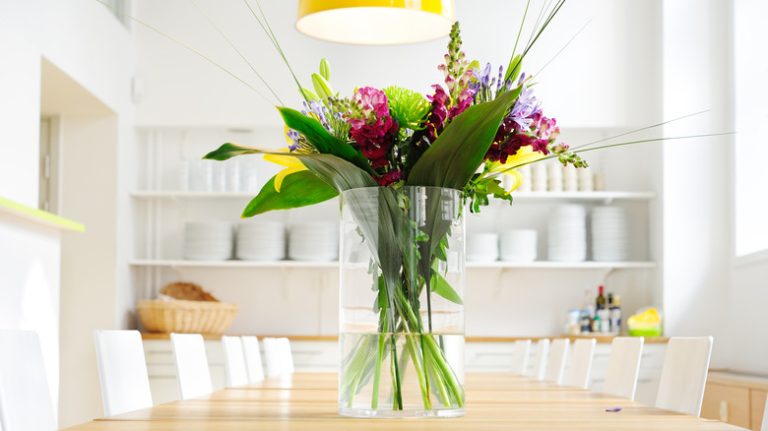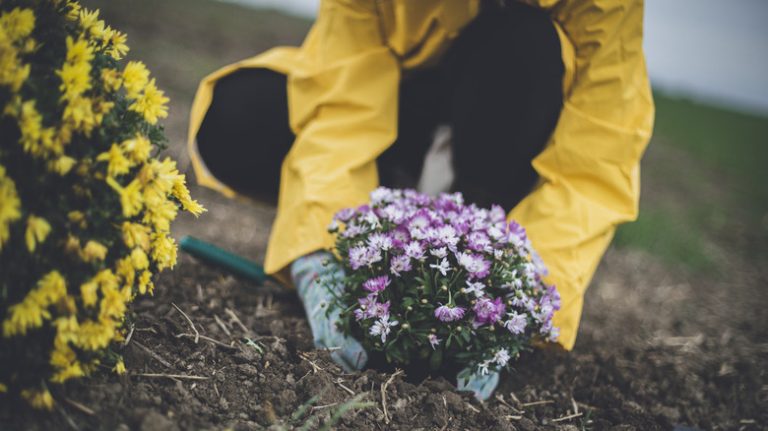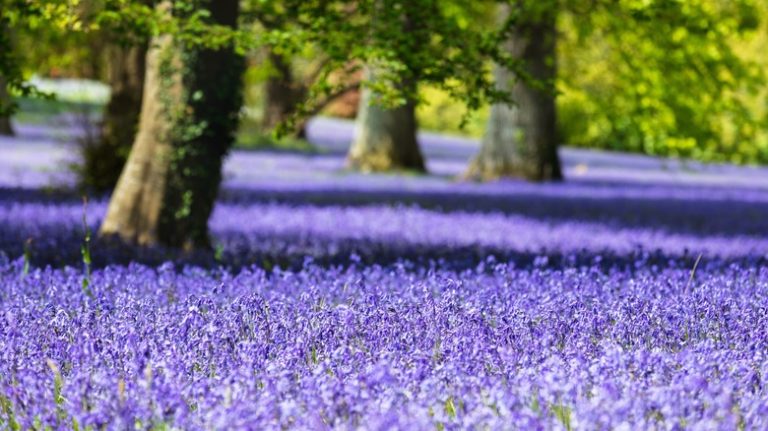As a gardener, you may be familiar with growing roses. These stunning flowers have captured the hearts of many with their beauty and fragrance. There are approximately 18,000 different species of roses, ranging from wild varieties to cultivated hybrids. In this article, we will introduce you to the 12 most beautiful classes of roses at a glance.
1. Hybrid Teas: These roses are known for their large, showy blooms. They come in a wide range of colors, from soft pinks to vibrant pinks-reds. A popular hybrid tea rose is the ‘Queen Elizabeth’, which blooms throughout the season.
2. Grandifloras: Similar to hybrid teas, grandifloras produce big, beautiful blooms. However, they are known for their ability to grow in clusters on a single stem. Popular varieties include the ‘Chicago Peace’ and ‘Mister Lincoln’.
3. Floribundas: These roses are a cross between hybrid teas and polyanthas. They produce clusters of smaller blooms in various colors, such as yellow, pink, and red. The ‘Iceberg’ rose is a popular floribunda.
4. Polyanthas: Polyanthas are known for their ability to bloom in large clusters. They are smaller in size and come in a variety of colors. An example of a polyantha rose is the ‘Cecile Brunner’.
5. Miniatures: As the name suggests, miniature roses are smaller in size, making them suitable for smaller spaces or potted plants. They come in a variety of colors and are quite flexible in terms of where they can be planted.
6. Climbing roses: These roses have a vining habit and can climb up walls or fences. They produce large and showy blooms and are available in various colors, including pink, red, and white.
7. Groundcovers: Groundcover roses are low-growing bushes that spread and cover a large area. They are often used for bedding or to fill spaces in the garden. Popular varieties include the ‘Rainbow’ and ‘Blue Ice’.
8. Shrub roses: Shrub roses are known for their hardiness and health. They come in a wide range of colors and sizes, from shorter bushes to taller varieties. A popular shrub rose is the ‘Mister Lincoln’.
9. Species roses: These roses refer to the wild roses found in nature. They are often found in a single color, such as pink or white. Some common species roses include the ‘Dog Rose’ and ‘Sweetbriar Rose’.
10. Historic roses: Historic roses refer to older varieties of roses that have been cultivated for centuries. They often have a strong fragrance and come in a variety of colors. Examples include the gallica rose and damask rose.
11. English roses: English roses are a cross between old-fashioned roses and modern hybrid teas. They have a beautiful flower form and a strong fragrance. ‘Lady Emma Hamilton’ and ‘Golden Celebration’ are popular English rose varieties.
12. Florists’ roses: Also known as cut roses, florists’ roses are grown specifically for the cut flower industry. They are bred for their long stems and showy blooms, making them perfect for bouquets and floral arrangements.
Warning: When it comes to growing roses, there are a few important things to keep in mind. Roses require regular watering, ample sunlight, and well-draining soil. They may also require pruning and periodic fertilizer application to maintain their health and showy appearance. Don’t let these tasks discourage you, though! With the right care, roses can be a gorgeous addition to any garden.
Now that you know the different classes of roses, you can choose the ones that best suit your garden and personal preferences. Whether you prefer the elegance of hybrid teas or the charm of historic roses, there is a rose out there for everyone. So go ahead, find your favorites, and start growing your own beautiful roses!
Source: www.example.com
15 Types of Roses for Your Garden
If you’re looking to add some beautiful roses to your garden, there are plenty of options to choose from. Here are 15 types of roses that will add a touch of beauty to your outdoor space.
1. Lavender Frost: These roses have a delicate lavender color, resembling the beauty of frost on flowers. They are known for their strong fragrance and can be a stunning accent in any garden.
2. Wild O’Hara: These wild roses have a unique charm with their slightly untamed appearance. They are beautiful and scented, making them a great choice for a garden with a more natural look.
3. Tea Roses: Tea roses come in various colors, ranging from soft pastels to vibrant hues. They are prized for their strong fragrance and beautiful blooms.
4. Climbing Roses: These roses are perfect for adding height and drama to your garden. They tend to be vigorous growers and can easily be trained to wrap around fences or trellises.
5. Historic Roses: If you love roses with a storied past, historic roses are the way to go. They are often more susceptible to diseases, but their unique charm and fragrances make them worth the extra care.
6. Wild Floribundas: As the name suggests, these roses are a wild combination of floribundas and wild roses. They often have a rainbow of colors and blooms that are perfect for creating a vibrant garden.
7. Tiffany: This rose variety is known for its beautiful purple color and delightful scent. It is a great choice for adding a touch of elegance to your garden.
8. Bonica: If you’re looking for a rose that is easy to care for, Bonica is a suitable choice. It is disease-resistant and produces clusters of beautiful pink flowers.
9. Fragrant Cloud: True to its name, Fragrant Cloud is strongly scented and has beautiful, bright red blooms. It is a standout in any garden.
10. Sterling Silver: This rose variety has silvery petals with a hint of pink and a strong fragrance. It is a favorite among rose enthusiasts.
11. Chicago Peace: A hybrid tea rose, Chicago Peace features stunning yellow and pink blooms. It is a high-climbing rose that adds a touch of elegance to any garden.
12. Mister Lincoln: Known for its vibrant red color and strong fragrance, Mister Lincoln is a favorite among rose lovers. It is a well-rounded rose that will thrive in your garden.
13. Rainbow’s End: This rose variety produces beautiful flowers with a rainbow of colors, ranging from yellow to red. It is perfect for creating a stunning display in your garden.
14. Ground Cover Roses: If you’re looking to create a low-maintenance garden, ground cover roses are a great choice. They are timesaving, vigorous growers that produce beautiful blooms.
15. What-A-Wild-Rose: As the name suggests, this rose variety is what a wild rose should be. It is disease-resistant and thrives in various plantings.
Choose from these 15 types of roses to create a beautiful and fragrant garden that will be the envy of all your neighbors.
Warning
When it comes to growing roses, there are a wide variety of options to choose from. Whether you’re looking for miniflora roses or shrub roses, there is something to suit every garden style and preference.
However, it is important to note that not all rose varieties are easy to grow or handle. Certain types, such as climbers or groundcover roses, require specific care and maintenance. For example, climbing roses like ‘Juan’ or ‘William Baffin’ need to be carefully trained and secured onto structures to prevent them from sprawling uncontrollably.
On the other hand, some roses are less prone to diseases and are easier to care for. Varieties like ‘Bonica’ and ‘Ohara’ are known for their disease resistance and can be grown with minimal effort. These roses also produce beautiful blooms and have a pleasant fragrance.
When choosing roses for your garden, it is important to consider their desired height and spread. Some roses are quite tall and wide-spreading, making them ideal for hedges or borders. Others, like miniature roses or floribundas, are more compact and can be used for edging or as accent plants.
Roses are also available in a range of colors, from traditional red and pink to more unique shades like blue or silver. The blooms can be single, semi-double, or fully double, depending on the variety. Some roses even produce attractive hips, adding interest to the plant even after the blooms have faded.
Before planting roses, it is essential to prepare the soil and ensure it is well-draining and rich in nutrients. Roses prefer a sunny location and regular watering. They should be watered at the base to prevent the leaves from getting wet, as this can lead to fungal diseases.
In terms of maintenance, deadheading spent blooms is important to encourage continuous blooming. Some roses may also require pruning to maintain their shape and remove any dead or diseased wood. Potted roses should be repotted every couple of years to ensure proper root development.
In conclusion, roses are some of the most beautiful and cherished plants in gardening. They offer a range of colors, sizes, and traits that can be enjoyed in various garden settings. However, it is important to choose the right variety and provide the necessary care to ensure their success in your garden.
Categories of Roses
There are several different categories of roses, each with their own unique characteristics and beauty. Here is a brief overview of some of the most popular categories:
- Hybrid Teas: These roses combine the growth habit of a bush rose with the large, single blooms of a traditional tea rose. They have long stems and are ideal for cutting and arranging in bouquets.
- Grandifloras: With their huge, showy blooms, grandifloras are known for their height and spread. They come in a wide range of colors and are perfect for adding a touch of elegance to any garden.
- Floribundas: These roses are a cross between hybrid teas and polyanthas, and they produce clusters of smaller flowers on each stem. They come in a variety of colors and are extremely easy to grow and care for.
- Antique Roses: Also known as old garden roses, these varieties have been passed down through generations and have a rich history. They are known for their fragrances and are usually very hardy.
- Climbing Roses: As the name suggests, climbing roses have long, flexible stems that can be trained to grow on walls, trellises, or fences. They come in a variety of colors and add a beautiful touch to the landscape.
- Shrub Roses: These roses are known for their bushy growth habit and are highly disease-resistant. They come in a wide range of colors and are perfect for filling in bare spots in the garden.
- Groundcover Roses: These low-growing roses are perfect for creating a carpet of color. They are vigorous growers and produce masses of flowers throughout the growing season.
- Miniature Roses: As the name suggests, these roses are small in size but pack a big punch. They are perfect for growing in containers or small beds and come in a wide range of colors.
- Climbing Hybrid Teas: These roses are a combination of climbing roses and hybrid teas. They have the large, single blooms of a hybrid tea rose but with the climbing habit of a climbing rose.
- Species Roses: These roses are the ancestors of all modern roses and come in a wide range of shapes, colors, and fragrances. They are usually very hardy and thrive in a variety of conditions.
- English Roses: Developed by the breeder David Austin, English roses are known for their old-fashioned charm and fragrant blooms. They come in a wide range of colors and are perfect for adding a touch of romance to the garden.
- Wild Roses: These roses are the ancestors of all other rose types and can be found growing in the wild. They are usually small in size and have simple, single flowers.
These are just a few of the many different categories and varieties of roses available. Whether you prefer the classic beauty of a hybrid tea or the wild charm of a species rose, there is sure to be a rose variety that will thrive in your garden and add beauty to your landscape.



